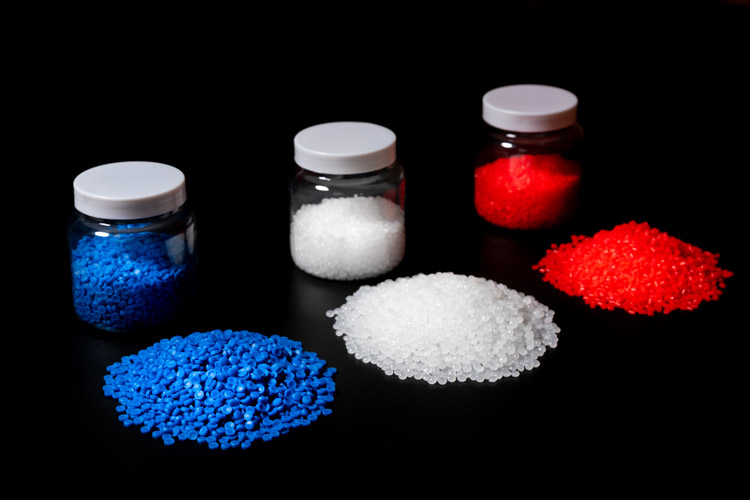Biodegradable Resins: The Benefits and Challenges of this Solution
From pill bottles and life-saving medical equipment to business-essential tools and household appliances, there are uncountable numbers of products that manufacturers make out of plastic. Polymers are truly exceptional materials.
While plastic will likely always have a place in our lives, it’s clear that our over-reliance on it has severely impacted our planet. Thankfully, biodegradable resins (also known as biopolymers and bioplastics) may provide a sustainable solution to this issue.
However, in contrast with synthetic resins, biodegradable resins present some unique challenges. If you’re interested in how biodegradable resins could work for your products, this piece is for you. In it, Anova Innovations will explore:
- Global plastic production
- The biodegradable resin market
- Challenges of using biodegradable resins
- The significance of conformal cooling
Global Plastic Production
People produce about 400 million tons of plastic waste every year. Half of all of this plastic is designed for single-use purposes, meaning it’s discarded after one use.
For the past five decades, the rate of plastic production has grown faster than any other material production. At our current rate, the global production of plastic is forecasted to reach 1.1 billion tons by 2050. That’s like producing eight Empire State Building’s worth of plastic a day. Despite recycling efforts, roughly 98 percent of single-use plastic products are still made from “virgin” fossil fuel feedstock.

The Biodegradable Resin Market
In search of a more sustainable option, many manufacturers are trying to identify how they can incorporate biodegradable plastic into their production processes. As their ideas transition from theoretical to practical, the biodegradable polymer market is poised to experience significant growth.
The global Biodegradable Polymer market reached $7.25 billion in 2021 and is anticipated to reach $23.65 billion by 2029. This equates to a staggering compound annual growth rate (CAGR) of 14.4 percent between 2022 and 2029.
This growth will be primarily due to biodegradable polymer use in water bottles, food containers, packaging, and medical supplies. Additionally, some governments are combating single-use plastics by creating initiatives and bans that encourage biodegradable plastics.
For instance, the United Kingdom has a wide variety of bans on plastic stirrers, drinking straws, plates, and cutlery. Likewise, St. Kitts and Nevis have a “Plastics Be Gone” campaign that aims to reduce single-use plastics by 30 percent over the next five years. There are also eight states that have outlawed single-use plastic bags.
There is an expense for manufacturers to transition from synthetic plastics to biodegradable resin. But surveys suggest that the majority of Americans are willing to pay more for sustainable products.
Currently, the biopolymers gaining the most prominence are those made from cellulose, chitosan, starch, and proteins. Environmentalists and manufacturers alike are now looking at how to source these materials from the food, pharmaceutical, and agricultural industries, which produce all of them as a byproduct of their manufacturing processes.
As biodegradable polymers become more widely adopted, people will realize a myriad of benefits. For instance, bioplastics:
- Produce fewer carbon emissions
- Use less energy in production
- Use less harmful chemicals
- Decompose quickly
Challenges of Using Biodegradable Resins

Unfortunately, bioplastics don’t come without a few disadvantages. Most notably, they have low-to-poor mechanical properties, meaning they don’t perform as well as their synthetic counterparts when in a load-bearing application. Due to most bioplastics’ limited mechanical properties, there is also a smaller range of uses.
Interestingly, the same thing that makes bioplastics environmentally friendly is the thing that makes them challenging to work with. With rapid degradation rates, the use cases for bioplastics become slightly more limited to single-use and limited-use applications. The high hydrophilic capacity of biopolymers also restricts the strength of products.
Due to these properties, many manufacturers have found it challenging to integrate bioplastics into their current processes. Additionally, with the price of bioplastics being significantly more expensive, they’re hesitant to experiment.
However, with the right molds, you can seamlessly replace synthetic plastics with biodegradable resins. In order to ensure improved product surface quality, better filling of the mold cavity, and improved cycle time, you need to use a mold with conformal cooling channels. These channels optimize the heating and cooling process to ultimately produce better products, even when using biodegradable resins.
Additive Manufacturing Makes Conformal Cooling Possible
Additive manufacturing (AM) is a process that can create complex molds by adding layers of material, such as steel, metal, or plastic. Nearly every step of this process is computer-aided and automated in order to produce highly intricate parts.
When using traditional subtractive manufacturing practices, manufacturers must mill and drill straight-line water cooling channels to cool the part. Now, by building molds layer by layer, AM provides the opportunity to create curved channels that follow the part’s geometry. With improved cooling abilities, AM opens up new opportunities to leverage the power of bioplastics.
Innovate with Anova
Bioplastics can help manufacturers reduce their carbon footprint and make customers happy. To minimize the challenges that come along with biodegradable resin, you should consult with an additive manufacturer that specializes in creating conformal cooling molds.
Not only will you see massive increases in productivity, but your ability to work with bioplastics will improve significantly. If you’re interested in how 3D steel-printed molds can enhance your business, reach out to Anova Innovations.
